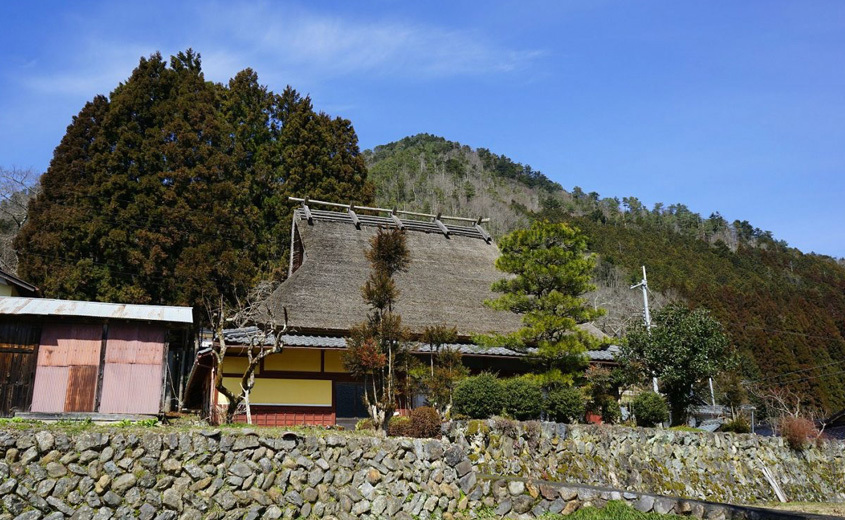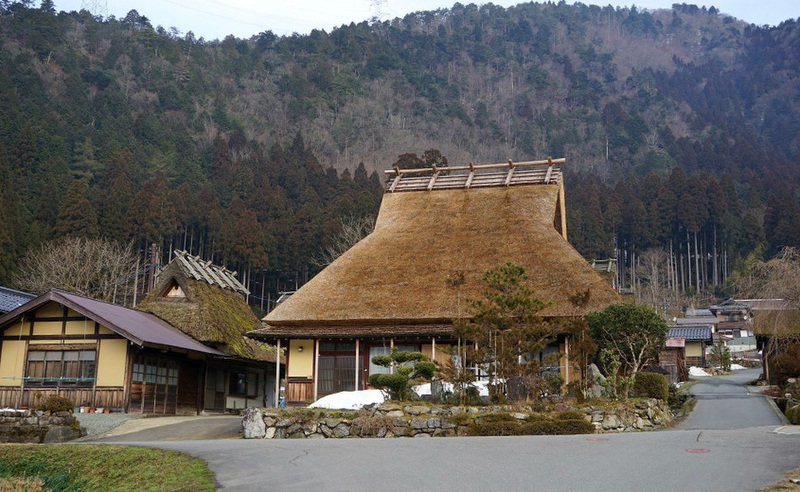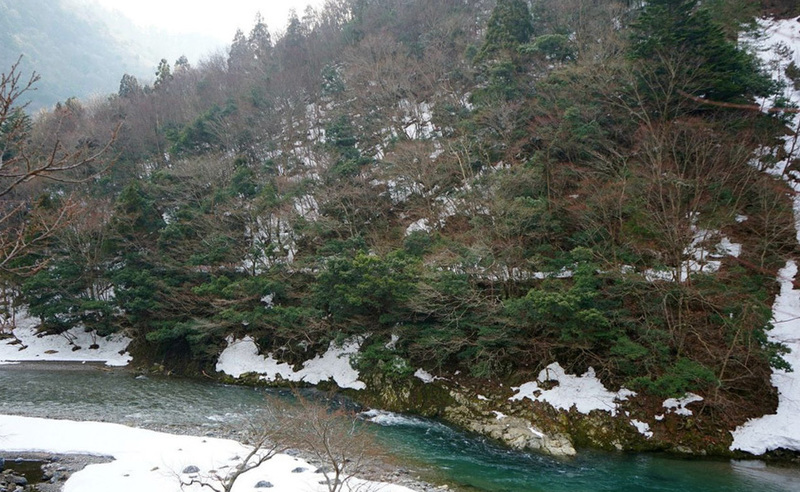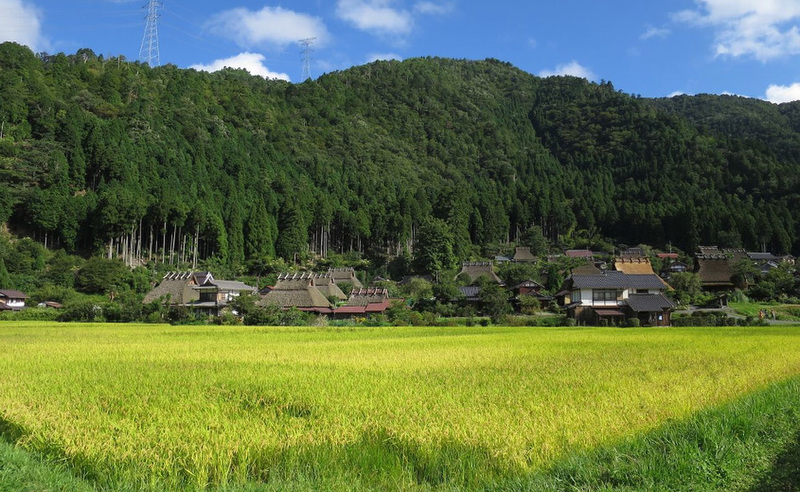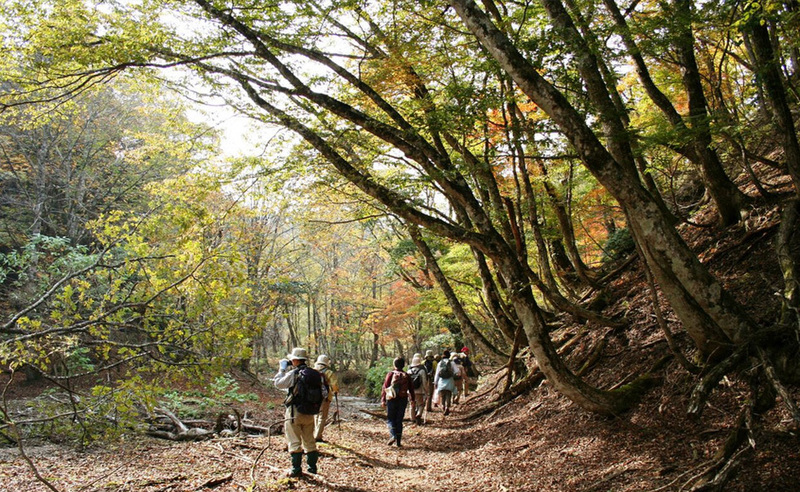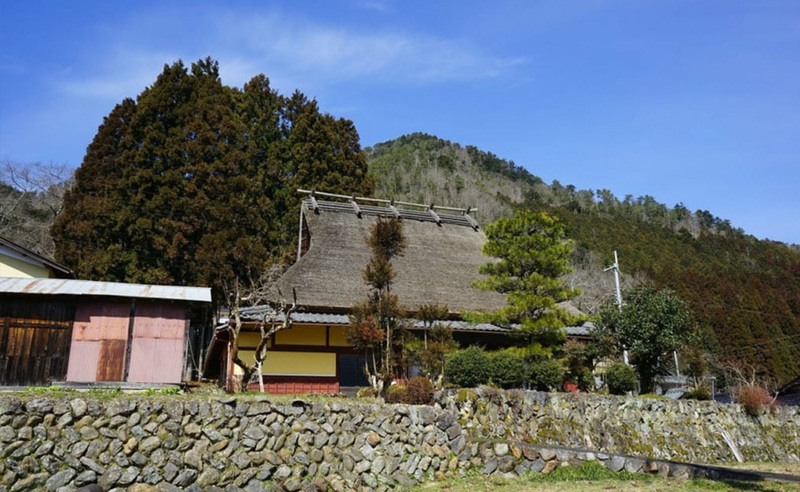You may have been drawn to Kyoto’s Miyama district by the idyllic sight of the traditional thatched roof houses against the background of the lush green mountain – a landscape representative of rural Japan.
Kayabuki no Sato – The Thatched Roof Village
A concentration of these traditional Japanese homes can be seen in Kayabuki no Sato, a village in the northern part of the district. Although Kayabuki no Sato (literally “Thatched Roof Village”) is a national heritage site, the thatched roof houses in this area are all private dwellings of Miyama residents. As you walk along the narrow, steep paths of the village, you may feel the delight of hearing voices calling out to one another or the sounds of the kitchen – in other words, the sounds of life, made by the people living in Miyama.
Located about 50 km north of Kyoto’s city center, Miyama expands over an area of approximately 340 km² of which 90% consists of forests. The town comprises several villages and in any of them you can spot “kayabuki no ie” (thatched roof houses), but nowhere is the density of these traditional homes larger than in Kayabuki no Sato.
Living in Miyama
You may find yourself wondering just how is it like to live here in Miyama, an area surrounded by mountains where time seems to have stopped in the shade of the nostalgic thatched roof houses.
In fact, everywhere in Miyama you will be able to feel the bond between the village inhabitants and the mountain. Miyama has developed as a satoyama – the area at the foothill of a mountain which is used by a community for agricultural purposes. Satoyama refers to the border area between the village and the mountain, comprising rice paddies and irrigation ponds, but also the part of the forest that is grown and exploited in forestry.
In Miyama you will be able to notice just how deep is the locals’ knowledge about the mountain and how considerate are their efforts not to interfere excessively in the natural cycles of the environment but just enough as to keep the forest healthy and in its best shape. Cutting down the trees unknowingly would ruin the forest, but, on the other hand, leaving it completely unmanaged would lead to natural disasters such as landslides or to the extinction of rare species of wildlife.
Miyama’s Ashiu Forest, containing areas with pristine woods, is actually a research station of Kyoto University’s Field Science and Education Center, which carefully observes the ecological state of the forest.
Satoyama culture is all about knowing what is the appropriate balance between human interference and the features of the natural environment. It can also be seen as the endeavor to integrate manmade landscape, such as the rice paddies, into the natural landscape.
Miyama’s Seasons
The bond between the human community and the mountain is particularly visible in the way the four seasons affect the life of Miyama residents. In the spring you would go pick bog rhubarb and other mountain herbs which sprout under the snow. In late April you would still be able to see thick layers of snow in the villages at higher altitudes, while 5 km down the mountain the cherry blossoms would be in bloom. Summers are cool and bring the enjoyment of catching the famously delicious sweetfish of Yura River, while autumns are the joyous time of harvest. Winter is a time of stillness – the whole forest is sleeping under rich layers of snow.
In fact, the cold season is one of the best times to appreciate the soothing features of traditional homes. The thatched roof houses keep the warmth inside in the winter and are cool during the summer. Gathered around a kotatsu (table with a heater) or an irori (sunken hearth in the floor of a room), the people living in Miyama enjoy talking and listening to each other’s stories.
Stay in a Thatched Roof House
Visitors to Miyama are welcome to experience living here in the unique local thatched houses by staying at the minshuku (guesthouses) and ryokan (traditional inns) in town. Spending some time in Miyama is a precious opportunity to recharge and take in the beauty and the serenity of a satoyama environment, where the lifestyle of the community resonates with the life of the mountain.








